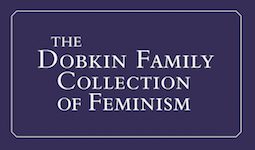Book of the New Moral World, The.
Inscribed By Owen
To
His Patroness Caroline Goldsmid
Owen, Robert. The Book of the New Moral World. Containing the rational system of society, founded on demonstrable facts, developing the constitution and laws of human nature and society. London: Effingham, 1836.
8vo.; dark green cloth, stamped in gilt; light wear. In a specially made quarter-morocco slipcase.
First edition of the most important expression of Owen’s utopian ideas, containing “some of the fullest statements of his doctrines” (DNB). Though this was originally intended as the first part of a comprehensive series, subsequent volumes did not appear for nearly a decade and are generally considered to be separate works. A collected and revised edition was issued in 1849. Kress C4213; CBEL III, 1296. A presentation copy, inscribed: To Caroline Goldsmid, from her affectionate friend, the Author.
Goldsmid was a daughter of the great Jewish financier and philanthropist Sir Isaac Goldsmid (1778-1859), one of the earliest Jewish brokers on the Stock Exchange, a leading advocate for Jewish emancipation, the first Jewish baronet, and a “prominent worker for unsectarian education and social reforms,” including improvements to penal codes, prisons, and hospitals. Goldsmid’s crowning achievement was the Jewish Disabilities Bill, passed in 1838 largely through his efforts. Goldsmid was a close friend of Robert Owen, and an ardent supporter of his utopian endeavors; Owen established his last communistic experiment, the “New World Community,” in 1839 on Goldsmid’s land at Tytherly, Hampshire. Caroline and, to an even greater extent, her older sister Anna Maria, continued their father’s friendship with Owen after his death, as well as his philanthropy.
Welsh socialist, pioneer of co-operation in industry and philanthropist Robert Owen (1771-1858) first implemented his socialist theories by purchasing the New Lanark mills (with partners William Allen and Jeremy Bentham), where he strove to ameliorate the working conditions of the employees. Maintaining that man’s character was dependent on his environment, he published his theories in A New View Of Society (1813-16) and devoted his career to the creation of a community that would prove his hypothesis. Of the several communities he founded, the best-known is was in New Harmony, Indiana; its mission was to enact a social experiment in reform through cooperation and rational education, ideals continued by his son, Robert Dale Owen, who produced the New-Harmony Gazette in the late 1820s. Through “socialism,” a term just entering the language at this time, Owen hoped to combat the competitive industrial system that forced factory owners to keep wages and conditions at oppressive levels.
(#3991)
Print Inquire


